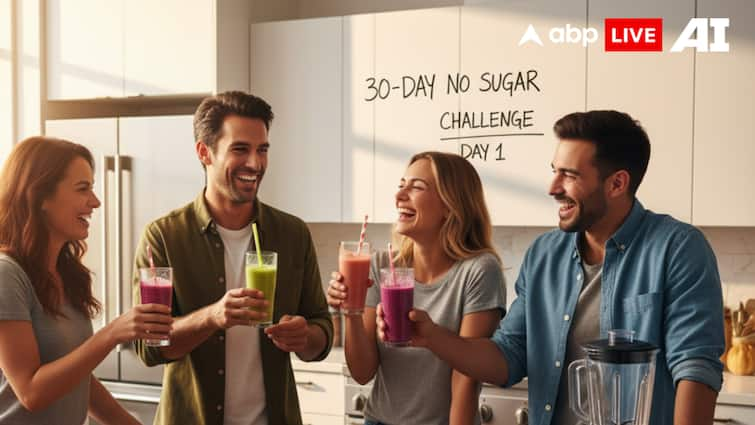Quitting sugar doe 30 days can be one of the toughest dietary challenges to attempt. From sudden cravings to changes in mood and energy levels, the journey is both demanding and rewarding. The first week is usually the hardest, but those who stick with it often notice remarkable benefits by the end of the month.
ALSO READ: 5 Powerful Home Remedies To Soothe Cold And Cough Naturally At Home
The First Week: Cravings, Irritability, And Adjustment
“The first few days without sugar can be tough. You might feel tired, have headaches, or feel irritable for no obvious reason. The good news is, this phase doesn’t last long. After about a week, your body starts to adjust, and things get easier,” said Dr. Uday Phadke, Director of Department of Endocrinology & Diabetes at Sahyadri Super Speciality Hospital, Deccan Gymkhana, Pune.
These withdrawal symptoms happen because the brain is used to the quick dopamine hit sugar provides. Cravings often strike after meals or late at night, making it hard to stay on track.
To handle this phase, hydration, protein-rich meals, and small distractions like a walk can help. As the doctor explained, “Those first days might feel uncomfortable, but it’s just your body getting used to the change. Stick with it, and soon, it will feel much easier.”
Visible Benefits: Energy, Skin, And Mood Boost
Once past the initial hurdle, the body begins to respond positively. “Your energy levels will stabilise, eliminating those extreme highs and sudden crashes. After a couple of weeks, even the afternoon slump will fade,” Dr. Phadke noted.
The benefits go beyond energy. “You’ll also see changes in your skin. Less sugar leads to reduced inflammation, which can result in fewer breakouts and a natural glow. Over time, it helps your skin stay firmer, as sugar can damage collagen. Your mood will improve too, most people find they become calmer and more focused after a week,” he added.
Avoiding Mistakes: Planning And Staying Consistent
The biggest roadblock for many is assuming “sugar-free” always means healthy. “Many packaged snacks and drinks contain artificial sweeteners or refined carbs that can still affect your cravings,” warned Dr. Phadke.
Planning meals in advance and checking food labels is crucial. “Hidden sugars are everywhere, think ketchup, sauces, flavoured yogurt, and even cereals,” he explained.
Many people struggle with extremes when attempting the no sugar challenge. Dr. Phadke explains, “Some people go too far by cutting out sugar entirely, but not eating enough, which can leave them feeling tired or irritable.” This simply shows how balance and proper meal planning are key to making the challenge sustainable.
For lasting results, fruits, nuts, and home-cooked meals work best. And if you slip? “Don’t worry. One small treat won’t ruin your progress. Just get back on track, stay consistent, and take it one day at a time.”
[Disclaimer: The information provided in the article, including treatment suggestions shared by doctors, is intended for general informational purposes only. It is not a substitute for professional medical advice, diagnosis, or treatment. Always seek the advice of your physician or other qualified healthcare provider with any questions you may have regarding a medical condition.]
Check out below Health Tools-
Calculate The Age Through Age Calculator



